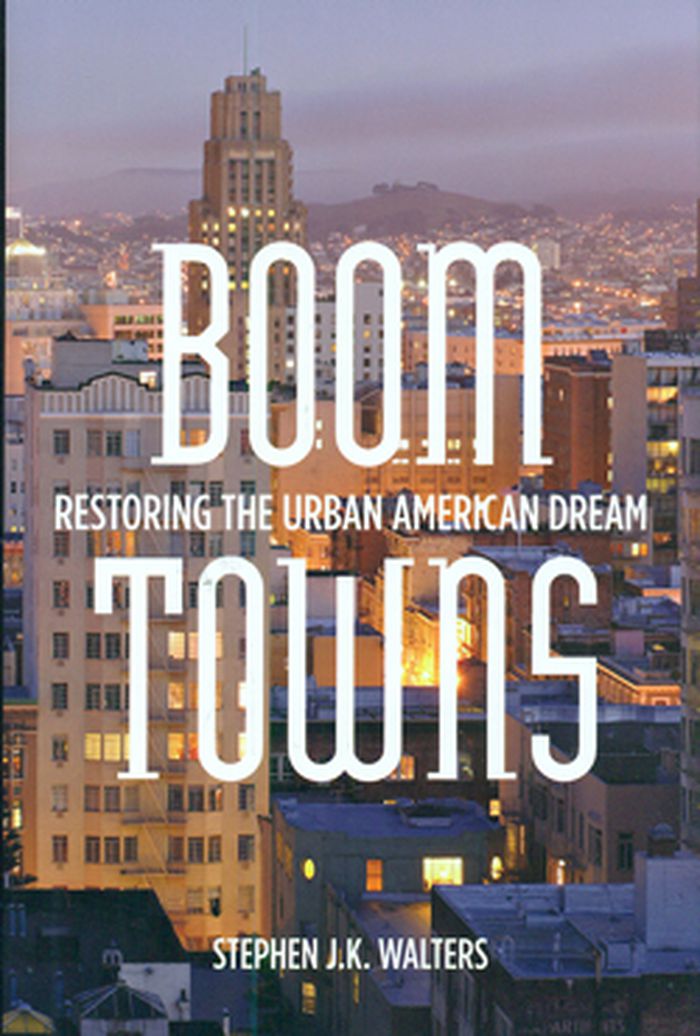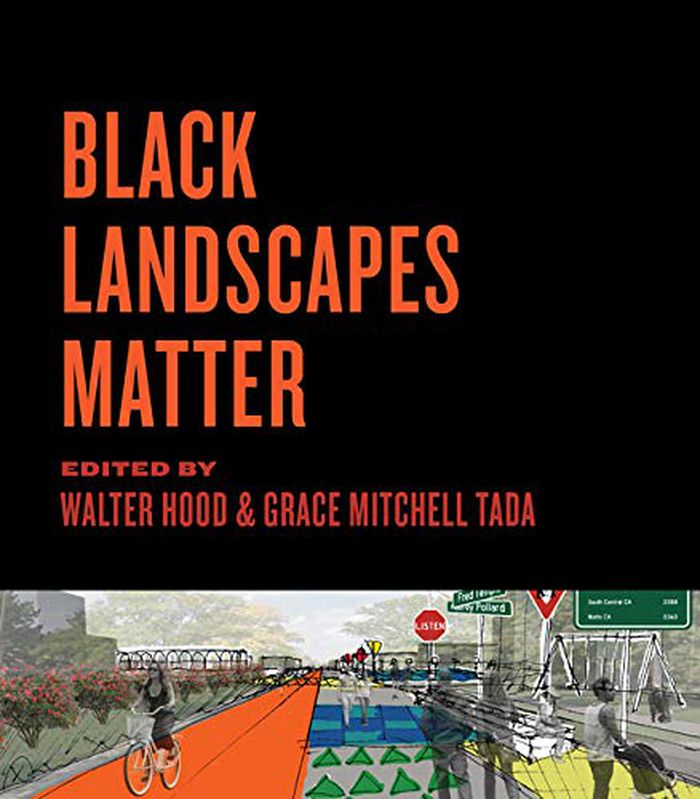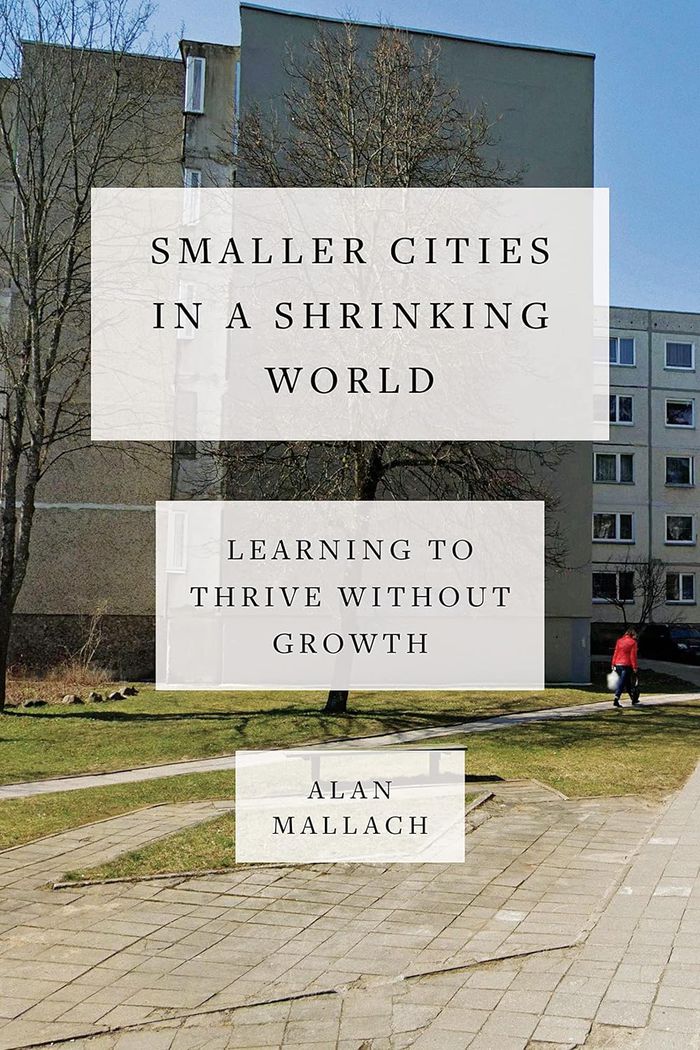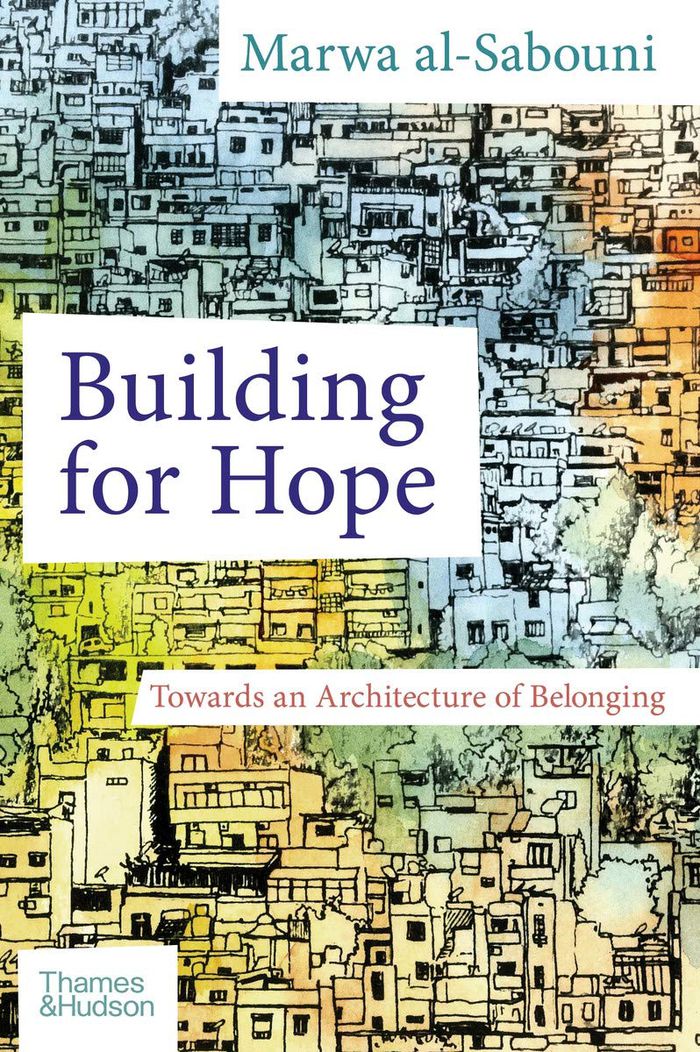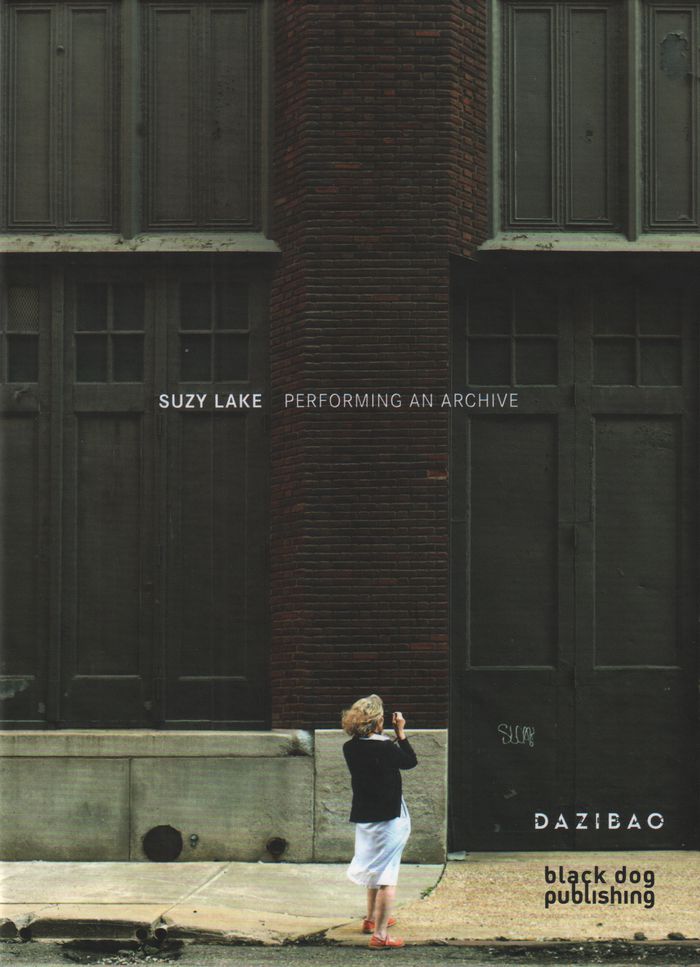$66.00
(disponible en magasin)
Résumé:
This unique look at the evolution of nightclubs across America and Europe since the 1960s reveals an unwavering truth about club culture--the one constant is change. Opening with the psychedelic haunts of the 1960s New York pop art scene and closing more than half a century later with the rise of post-club happenings, this publication shows how nightlife spaces have(...)
Temporary pleasure: Nightclub architecture, design and culture from the 1960s to today
Actions:
Prix:
$66.00
(disponible en magasin)
Résumé:
This unique look at the evolution of nightclubs across America and Europe since the 1960s reveals an unwavering truth about club culture--the one constant is change. Opening with the psychedelic haunts of the 1960s New York pop art scene and closing more than half a century later with the rise of post-club happenings, this publication shows how nightlife spaces have evolved to meet the needs of their generation, and how each generation was seeking something a little different from the one before. Each chapter focuses on a distinct phase and city: Italy's politically radical clubs of the '60s, New York City's disco scene, Detroit and Chicago's house and techno paradises, Ibiza's counterculture communal retreats, Britain's rave culture, and Berlin's techno scene. The clubs come to life in double-page spreads that feature specs and detailed profiles. Author John Leo Gillen offers his take on various important cultural, design and architectural details, while numerous photographs offer their own vibey stories. The book features interviews with people who were involved in a number of the scenes included, from NYC disco mainstay DJ Justin Strauss to Ben Kelly, architect of Manchester's legendary venue The Haçienda. As the world emerges from its Covid-induced isolation, this celebration of crowded rooms, dance-worthy beats, and communal transcendence feels more important than ever.
livres
$52.95
(disponible sur commande)
Résumé:
In recent years the idea of sacred space has not been considered a relevant topic in contemporary architecture, a neglect that is even more pronounced in terms of debates about the city. The texts and projects collected together in this book aim to redress this oversight, and re-open a contemporary understanding and discussion of the architecture of sacred space. The book(...)
Architecture contemporaine
novembre 2016
AA Agendas: Rituals and walls. The architecture of sacred space
Actions:
Prix:
$52.95
(disponible sur commande)
Résumé:
In recent years the idea of sacred space has not been considered a relevant topic in contemporary architecture, a neglect that is even more pronounced in terms of debates about the city. The texts and projects collected together in this book aim to redress this oversight, and re-open a contemporary understanding and discussion of the architecture of sacred space. The book itself is the result of a year-long investigation on the nature of sacred space and its manifestation developed in the AA’s Diploma Unit 14. It consists of design proposals that range from a multi-faith school in Strasbourg to the reconstruction of a festival hall in the city of Xian, China; from a Jesuit monastery in Detroit to a women’s Islamic centre in Paris. Each proposal is introduced by critical texts that analyse the political and ideological meaning of religious architecture. The book is complemented by essays by Pier Vittorio Aureli, Maria Sheherazade Giudici and Hamed Khosravi that focus on the relationship between forms of worship and architecture, and argue that within sacred space form must follow function – in other words, architectural space must adhere to the rituals through which the sacred is enacted, and that the meaning of sacred space goes far beyond the stereotypes of contemplation and spirituality, and instead aligns with the political and social ethos of the city.
livres
novembre 2016
Architecture contemporaine
$33.95
(disponible sur commande)
Résumé:
American cities, once economic and social launch pads for their residents, are all too often plagued by poverty and decay. One need only to look at the ruins of Detroit to see how far some once-great cities have fallen, or to Boston and San Francisco for evidence that such decline is reversible. In Boom Towns, Stephen J.K. Walters diagnoses the root causes of urban(...)
Boom towns: restoring the urban american dream
Actions:
Prix:
$33.95
(disponible sur commande)
Résumé:
American cities, once economic and social launch pads for their residents, are all too often plagued by poverty and decay. One need only to look at the ruins of Detroit to see how far some once-great cities have fallen, or to Boston and San Francisco for evidence that such decline is reversible. In Boom Towns, Stephen J.K. Walters diagnoses the root causes of urban decline in order to prescribe remedies that will enable cities to thrive once again. Arguing that commonplace explanations for urban decay misunderstand the nature our towns, Walters reconceives of cities as dense accumulations of capital in all of its forms — places that attract people by making their labor more productive and their leisure more pleasurable. Policymakers, therefore, must properly define and enforce property rights in order to prevent the flight of capital and the resulting demise of urban centers. Using vivid evocations of iconic towns and the people who crucially affected their destinies, Walters shows how public policy measures which aim to revitalize often do more harm than good. He then outlines a more promising set of policies to remedy the capital shortage that continues to afflict many cities and needlessly limit their residents' opportunities. With its fresh interpretation of one of the American quandaries of our day, Boom Towns offers a novel contribution to the debate about American cities and a program for their restoration.
Théorie de l’urbanisme
Black landscapes matter
$47.95
(disponible sur commande)
Résumé:
The question "Do black landscapes matter?" cuts deep to the core of American history. From the plantations of slavery to contemporary segregated cities, from freedman villages to northern migrations for freedom, the nation’s landscape bears the detritus of diverse origins. Black landscapes matter because they tell the truth. In this vital new collection, acclaimed(...)
Black landscapes matter
Actions:
Prix:
$47.95
(disponible sur commande)
Résumé:
The question "Do black landscapes matter?" cuts deep to the core of American history. From the plantations of slavery to contemporary segregated cities, from freedman villages to northern migrations for freedom, the nation’s landscape bears the detritus of diverse origins. Black landscapes matter because they tell the truth. In this vital new collection, acclaimed landscape designer and public artist Walter Hood assembles a group of notable landscape architecture and planning professionals and scholars to probe how race, memory, and meaning intersect in the American landscape. Essayists examine a variety of U.S. places— ranging from New Orleans and Charlotte to Milwaukee and Detroit— exposing racism endemic in the built environment and acknowledging the widespread erasure of black geographies and cultural landscapes. Through a combination of case studies, critiques, and calls to action, contributors reveal the deficient, normative portrayals of landscape that affect communities of color and question how public design and preservation efforts can support people in these places. In a culture in which historical omissions and specious narratives routinely provoke disinvestment in minority communities, creative solutions by designers, planners, artists, and residents are necessary to activate them in novel ways. Black people have built and shaped the American landscape in ways that can never be fully known. ''Black landscapes matter'' is a timely and necessary reminder that without recognizing and reconciling these histories and spaces, America’s past and future cannot be understood.
Théorie du paysage
livres
Description:
323 pages, 15 pages of plates : illustrations ; 23 cm
Los Angeles, Calif. : Process ; London : Turnaround [distributor], ©2010.
The modern utopian : alternative communities of the '60s and '70s / by Richard Fairfield ; contributions from Timothy Miller [and others].
Actions:
Exemplaires:
Description:
323 pages, 15 pages of plates : illustrations ; 23 cm
livres
Los Angeles, Calif. : Process ; London : Turnaround [distributor], ©2010.
$43.95
(disponible sur commande)
Résumé:
Over the past hundred years, the global motto has been "more, more, more" in terms of growth - of population, of the built environment, of human and financial capital, and of all manner of worldly goods. This was the reality as the world population boomed during the 1960s and 1970s. But reality is changing in front of our eyes. Growth is already slowing down, and(...)
Smaller cities in a shrinking world: learning to thrive without growth
Actions:
Prix:
$43.95
(disponible sur commande)
Résumé:
Over the past hundred years, the global motto has been "more, more, more" in terms of growth - of population, of the built environment, of human and financial capital, and of all manner of worldly goods. This was the reality as the world population boomed during the 1960s and 1970s. But reality is changing in front of our eyes. Growth is already slowing down, and according to the most sophisticated demographers, the earth's population will begin to decline not hundreds of years from now, but within the lifetimes of many of the people now living on the planet. In ''Smaller cities in a shrinking world'', urban policy expert Alan Mallach seeks to understand how declining population and economic growth, coupled with the other forces that will influence their fates, particularly climate change, will affect the world's cities over the coming decades. What will it mean to have a world full of shrinking cities? Does it mean that they are doomed to decline in more ways than simply population numbers, or can we uncouple population decline from economic decay, abandoned buildings and impoverishment? Mallach has spent much of the last thirty or more years working in, looking at, thinking, and writing about shrinking cities-from Trenton, New Jersey, where he was director of housing and economic development, to other American cities like Detroit, Flint, and St. Louis, and from there to cities in Japan and Central and Eastern Europe. He has woven together his experience, research, and analysis in this fascinating, realistic yet hopeful look at how smaller, shrinking cities can thrive, despite the daunting challenges they face.
Théorie de l’urbanisme
Building for hope
$39.95
(disponible sur commande)
Résumé:
This new book by Syrian architect Marwa al-Sabouni, seeks to understand how cities and buildings- scarred by conflict, blight, and pandemic- can be healed through design and urban mindfulness. When Marwa al-Sabouni published Battle for Home in 2016, she was a little-known architect, living in battle-ravaged Homs, Syria, unable to practice her profession. She turned her(...)
Building for hope
Actions:
Prix:
$39.95
(disponible sur commande)
Résumé:
This new book by Syrian architect Marwa al-Sabouni, seeks to understand how cities and buildings- scarred by conflict, blight, and pandemic- can be healed through design and urban mindfulness. When Marwa al-Sabouni published Battle for Home in 2016, she was a little-known architect, living in battle-ravaged Homs, Syria, unable to practice her profession. She turned her fierce intelligence to chronicling how her city and country were undone through decades of architectural mismanagement and mistakes. Once published, Marwa al-Sabouni’s book and story attracted the attention of international media- CNN, The New York Times- and received critical acclaim worldwide. The United Nations called on her for insights and expertise. She became a TED fellow, was invited to speak to audiences around the world, and some suggested she be nominated for architecture’s highest honor, the Pritzker Prize. Al-Sabouni’s deep understanding of Middle Eastern heritage and architecture gives her insight into a wide range of cities, informing her views on how cities work best, how they might fail, and what can be done to harmonize the lives of all their inhabitants. In this new book, al-Sabouni draws together several narratives: her personal and professional observations of some of the world’s most fascinating cities, from Detroit to Helsinki; the lessons that Western societies might learn from Islamic culture and design; and philosophical reflections on how our personal and communal spaces can provide the basic foundations for happiness. Through this tapestry of personal experience, unblinking perspective, and insight, al-Sabouni offers real-world solutions- and hope- for how peace might be created through mindful urban planning.
Théorie de l’architecture
$19.95
(disponible en magasin)
Résumé:
Figure incontournable de l’art contemporain au Canada et reconnue sur la scène internationale, Suzy Lake poursuit dans « Performing an Archive » ses réflexions sur des questions d’ordre identitaire et social. Entre l’Histoire et son histoire familiale, Suzy Lake témoigne du développement urbain, démographique et social de Détroit, une ville marquée au fil du siècle(...)
Suzy Lake: performing an archive
Actions:
Prix:
$19.95
(disponible en magasin)
Résumé:
Figure incontournable de l’art contemporain au Canada et reconnue sur la scène internationale, Suzy Lake poursuit dans « Performing an Archive » ses réflexions sur des questions d’ordre identitaire et social. Entre l’Histoire et son histoire familiale, Suzy Lake témoigne du développement urbain, démographique et social de Détroit, une ville marquée au fil du siècle dernier par le déclin économique, les tensions raciales et un taux de criminalité effarant. Dans un processus performatif, l’artiste se met en scène sur les différents lieux ayant été occupés par ses ancêtres.
Monographies photo
livres
$35.95
(disponible sur commande)
Résumé:
Bâtiment abandonné, ruine moderne, fantôme urbain, squelette immobilier, structure désaffectée… Une variété d’appellations pour tenter de circonscrire, au moins par les mots, le phénomène d’abandon de fragments entiers de villes. Cet abandon, qu’il soit partiel ou total, temporaire ou durable, est examiné ici au prisme du « potentiel » que pourrait représenter la(...)
Du potentiel des grandes structures urbaines abandonées / On the potential of abandoned large urban structures
Actions:
Prix:
$35.95
(disponible sur commande)
Résumé:
Bâtiment abandonné, ruine moderne, fantôme urbain, squelette immobilier, structure désaffectée… Une variété d’appellations pour tenter de circonscrire, au moins par les mots, le phénomène d’abandon de fragments entiers de villes. Cet abandon, qu’il soit partiel ou total, temporaire ou durable, est examiné ici au prisme du « potentiel » que pourrait représenter la survivance de ces structures. Ciblant 12 études de cas, cette première édition des Cahiers du Laboratoire d’Étude de l’Architecture Potentielle (LEAP) convoque autour de cette thématique la discipline architecturale, l’histoire de l’art et la sémiotique. De Montréal à Berlin, de Détroit à Turin, la variété des contributions est organisée autour de quatre tensions interrogeant le statut de ces structures (monumentalité/monument), leur échelle (architecture/urbanisme), les figures qu’elles cristallisent (utopie/ruine) et les imaginaires qui s’y développent (résistances/potentiels).
livres
mars 2017
Théorie de l’architecture
$126.00
(disponible sur commande)
Résumé:
Née en Perse, puis transmise de l'Orient à l'Occident, la tradition du jardin islamique s'est implantée au Maroc, en Espagne et au Portugal, où aujourd'hui encore, comme le montre cet ouvrage, nous pouvons en voir de merveilleux exemples. Car si ces trois pays sont désormais séparés par dès frontières politiques et culturelles, ils ont partagé une longue histoire du ville(...)
Jardins
janvier 1900, Paris / Madrid
Jardins du Maroc, d'Espagne et du Portugal : un art de vivre partagé
Actions:
Prix:
$126.00
(disponible sur commande)
Résumé:
Née en Perse, puis transmise de l'Orient à l'Occident, la tradition du jardin islamique s'est implantée au Maroc, en Espagne et au Portugal, où aujourd'hui encore, comme le montre cet ouvrage, nous pouvons en voir de merveilleux exemples. Car si ces trois pays sont désormais séparés par dès frontières politiques et culturelles, ils ont partagé une longue histoire du ville au XVe siècle, celle d'al-Andalus, fondement d'un patrimoine commun dont les traces sont ,encore présentes dans le paysage rural et urbain contemporain. U art des jardins occupe en effet une place privilégiée dans cette mémoire partagée puisque, de Marrakech à Grenade, de Fès à Sintra, nous retrouvons les mêmes patios secrets cernés de murailles, les mêmes élégants pavillons élevés au-dessus de parterres fleuris, les mêmes bassins paisibles où se reflète le ciel. Trois auteurs issus de chacun de ces pays, spécialistes de l'histoire des jardins; retracent ici la géographie de ces lieux enchanteurs hérités du passé, analysent leur structure, évaluent lés modifications apportées au cours du temps. Si le Maroc a su conserver de façon vivante des jardins créés au XIIe siècle, l'Espagne a réussi à développer depuis lé Califat son héritage arabe et à l'enrichir sans lui faire perdre son âme, tandis que le Portugal prolongeait jusqu'au XVIe siècle ses échanges fructueux par-delà le détroit.
Jardins

